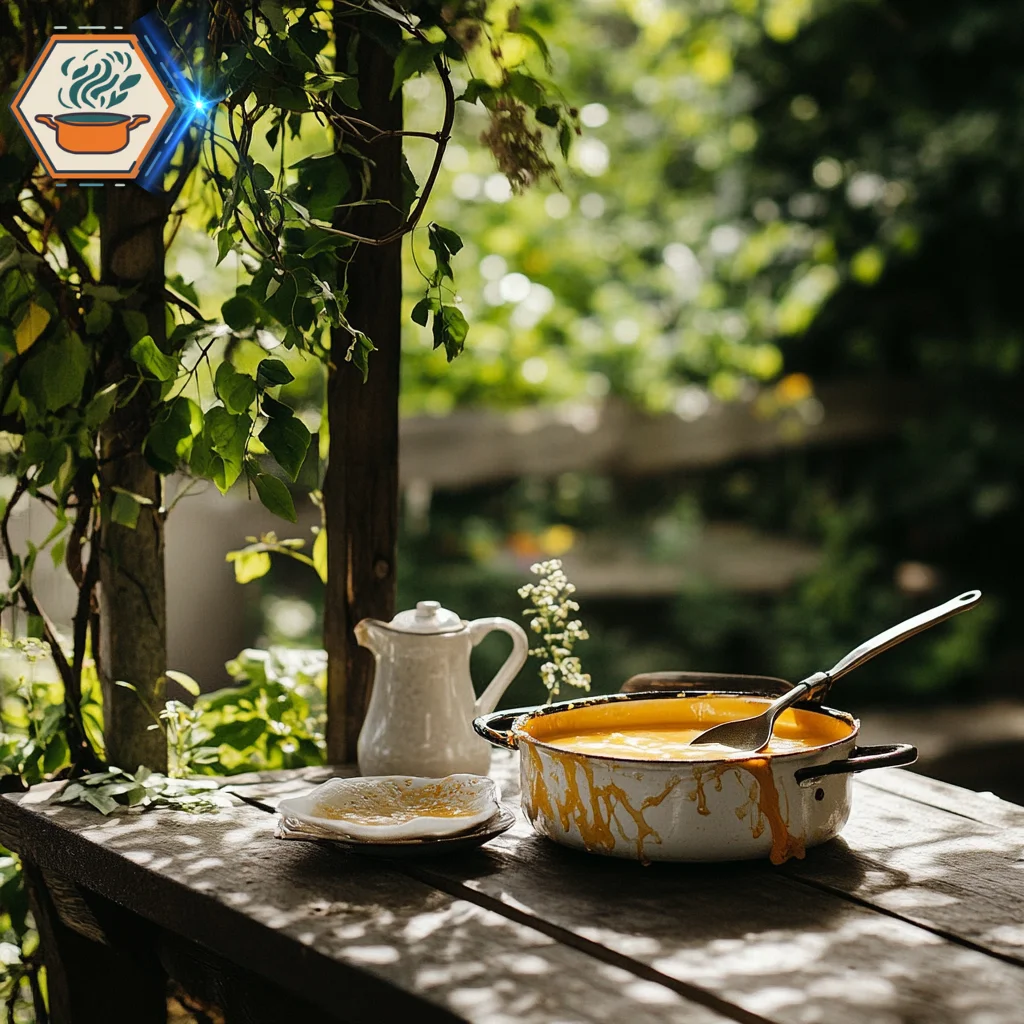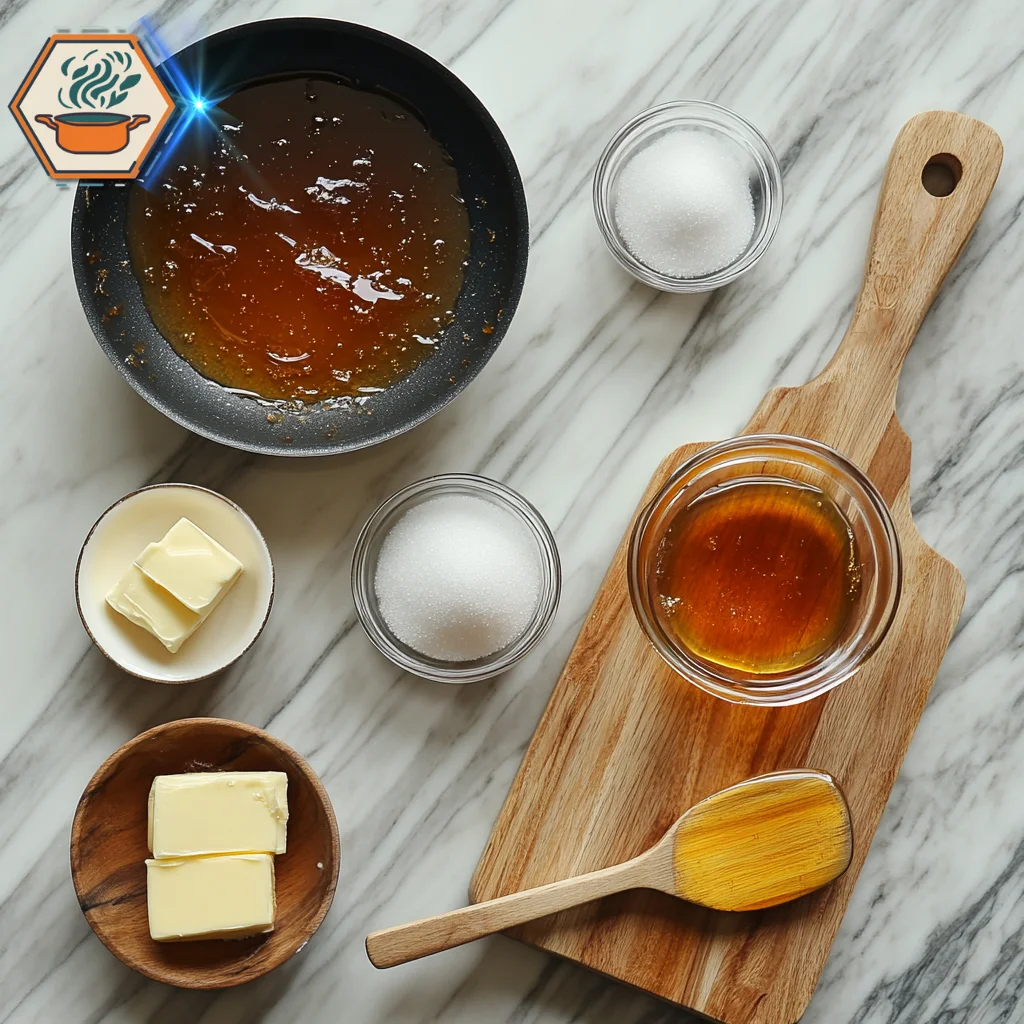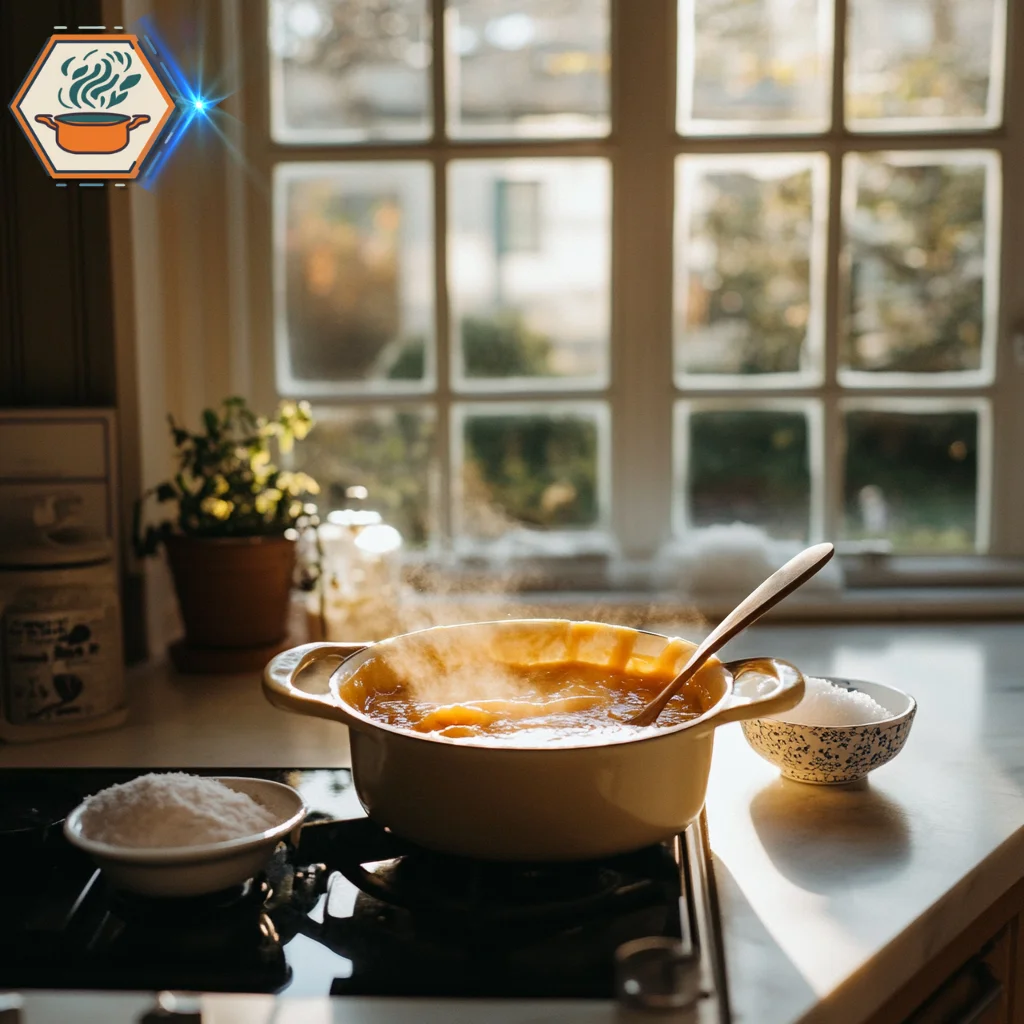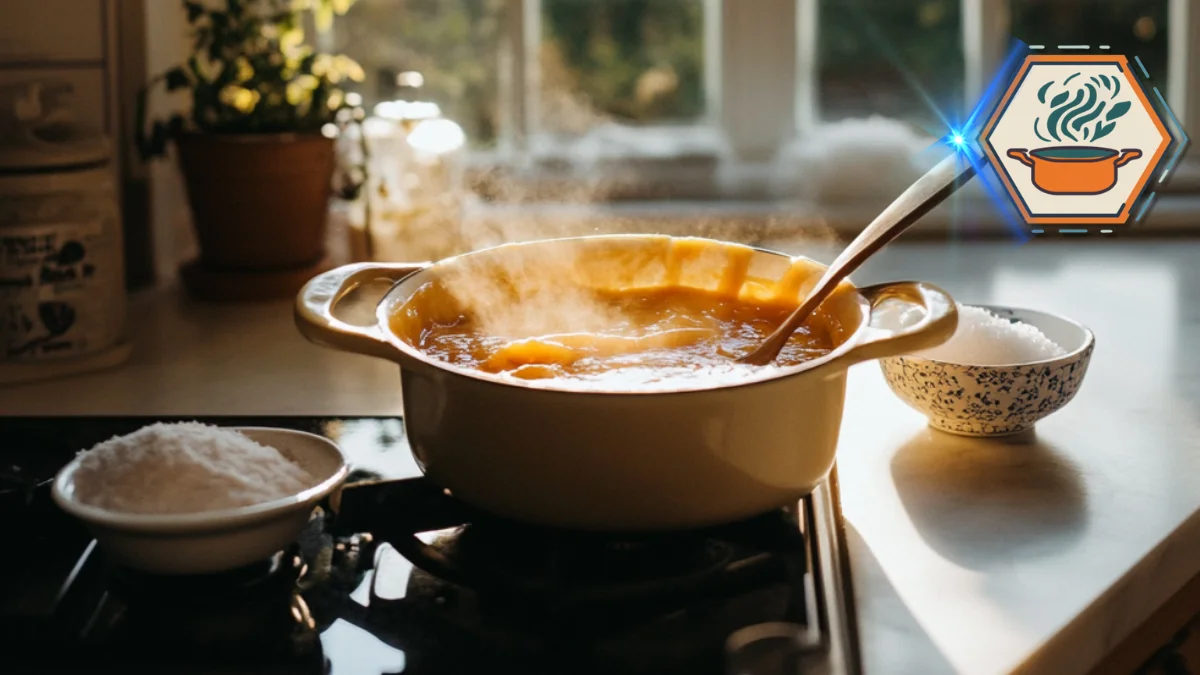Table of Contents
Understanding Caramelization
Introduction to Caramelization
Caramelizing Sugar is one of the most fascinating transformations in cooking. It’s a process where sugar is heated until it melts, browns, and develops complex flavors and aromas. This technique is not just a cornerstone of baking but also a culinary art that elevates both sweet and savory dishes. But what exactly happens during caramelization, and why is it so transformative?
What Is Caramelization?
Caramelization is a chemical process where sugar molecules break down under heat, resulting in a rich, golden-brown hue and an intricate combination of flavors, from nutty to buttery. It’s the foundation for creating caramel sauce, toffee, and even the crisp topping on a crème brûlée.
Unlike the Maillard reaction, which involves proteins and sugars, caramelization is a sugar-only process. This distinction explains why caramel has such a distinctively sweet and complex flavor profile.
Pro Tip: For a deeper understanding of sugar’s role in cooking, check out Wikipedia’s article on caramelization, which provides a scientific perspective on this transformation.
The Science Behind Caramelizing Sugar
When sugar is heated, it begins to melt at around 320°F (160°C). As the temperature rises, the sugar molecules start to break apart, releasing water and creating hundreds of new compounds. These compounds contribute to the caramel’s rich flavor and color.
The process involves three key stages:
- Melting: Sugar crystals dissolve into a clear liquid.
- Browning: The sugar darkens as it breaks down chemically.
- Flavor Development: The release of volatile compounds creates the characteristic nutty, buttery, and slightly bitter taste of caramel.
Caramelization is a highly sensitive process. Too little heat, and you won’t achieve the depth of flavor; too much, and the sugar burns, creating a bitter taste.
Related Post: Learn more about how caramelization impacts recipes like What is crème brûlée made of? to add a touch of sweetness and depth to savory dishes.
Why Caramelizing Sugar Enhances Flavor and Texture
The magic of caramelization lies in its ability to enhance both flavor and texture. The deep, golden color adds a visually appealing touch to desserts, while the flavors range from sweet to toasty, depending on how far you take the process.
In terms of texture, caramelized sugar can create a glossy sauce, a crunchy topping, or even a chewy candy base. This versatility makes it a favorite among chefs and home cooks alike.
Types of Sugar Suitable for Caramelization

When it comes to caramelization, not all sugars behave the same. Understanding the differences between various types of sugar can help you choose the best one for your recipe and achieve the desired results.
1. White Granulated Sugar
White granulated sugar is the most commonly used sugar for caramelization. Its neutral flavor and fine texture make it ideal for creating smooth caramel sauces and toppings. The simplicity of this sugar allows the caramelization process to shine, producing a pure, sweet result.
When to Use White Granulated Sugar
- For classic caramel sauce
- As a base for brittles and toffees
- In recipes where a clean, neutral flavor is desired
2. Brown Sugar
Brown sugar contains molasses, giving it a deeper flavor and a darker color during caramelization. This sugar caramelizes faster than white sugar due to its higher moisture content and additional impurities.
Differences in the Process
When caramelizing brown sugar, you’ll notice that it tends to form a thicker and stickier consistency. This makes it perfect for recipes like sticky toffee pudding or glazes for ham.
When to Use Brown Sugar
- For recipes needing a richer, molasses-like flavor
- In savory glazes or marinades
- As a topping for oatmeal or baked goods
3. Other Sugars: Demerara, Muscovado, and More
Specialty sugars like Demerara and Muscovado are less refined and retain more of their natural molasses. These sugars offer unique flavors that can elevate your dishes with earthy, toffee-like notes.
Demerara Sugar
- Larger crystals and a subtle caramel flavor
- Great for sprinkling on desserts for a crunchy topping
Muscovado Sugar
- Sticky texture with a strong molasses flavor
- Ideal for gingerbread, barbecue sauces, and dark caramels
Other Options
- Coconut sugar: Adds a mild, nutty flavor
- Turbinado sugar: Comparable to Demerara sugar but features finer crystals.
Each of these sugars has a unique caramelization profile, allowing for creative experimentation in the kitchen.
Mastering the Techniques of Caramelizing Sugar
Caramelizing sugar is both an art and a science, requiring precision, patience, and preparation. Whether you’re aiming for a velvety caramel sauce or a crunchy toffee, mastering the techniques of caramelization can transform your culinary creations. This section explores every step, from setting up your workspace to troubleshooting common issues, ensuring your caramel turns out perfect every time.
Preparation Steps Before Caramelizing Sugar

Setting Up Your Workspace
Before you begin, organize your workspace for efficiency and safety. Caramelizing sugar is a time-sensitive process, so having everything within reach can make the difference between success and burnt sugar.
- Clear the Area: Remove clutter and ensure your cooking surface is clean and stable.
- Mise en Place: Measure all ingredients and prepare your tools before turning on the heat. This includes sugar, water (if using the wet method), and any flavoring agents like butter or cream.
- Ventilation: Open a window or turn on a fan, as caramelizing sugar can produce intense aromas.
Related Tip: Check out our article on How to Caramelize Brûlée? to see how caramelized flavors elevate savory dishes.
Necessary Tools and Ingredients
Having the right tools can simplify the caramelization process and help you achieve consistent results.
Tools
- Heavy-Bottomed Saucepan: Ensures even heat distribution.
- Candy Thermometer: Helps monitor temperature accurately.
- Heat-Resistant Spatula: For stirring and scraping without melting.
- Pastry Brush: To prevent sugar crystallization by washing down the sides of the pan.
- Bowls and Measuring Cups: For pre-measuring ingredients.
Ingredients
- Sugar: Choose between white granulated, brown, or specialty sugars depending on your recipe.
- Water: Essential for the wet method.
- Optional Additives: Butter, cream, or spices for added flavor.
Safety Precautions When Working with Hot Sugar
Caramelizing sugar involves high temperatures, which can be dangerous if mishandled. Follow these precautions to avoid accidents:
- Use Protective Gear: Put on oven mitts and an apron to safeguard against spills and splashes.
- Avoid Distractions: Stay focused on the process, as sugar can burn quickly.
- Keep Children Away: Hot sugar can cause severe burns if spilled.
- Have Cold Water Ready: In case of burns, rinse immediately with cold water.
Step-by-Step Guide to Dry Caramelizing Sugar
Pros and Cons of the Dry Method
The dry caramelization method entails melting sugar directly in a pan without the addition of water.
Pros:
- Faster process
- Produces a deeper, more concentrated flavor
Cons:
- Requires constant attention
- Higher risk of burning
Detailed Instructions for Achieving a Smooth Caramel
- Heat the Pan: Place a heavy-bottomed pan on medium heat and allow it to warm evenly.
- Add Sugar: Spread a thin, even layer of sugar across the pan.
- Melt and Stir: Allow the sugar to melt gradually, stirring gently with a heat-resistant spatula to ensure even cooking.
- Adjust Heat: Lower the heat if the sugar starts to brown too quickly.
- Remove from Heat: Once the sugar reaches a golden-brown color, immediately remove it from the heat to prevent burning.
Tips for Avoiding Crystallization
- Use clean utensils to avoid introducing impurities.
- If sugar crystals appear on the sides of the pan, use a damp pastry brush to gently brush them down.
- Avoid over-stirring, as agitation can cause crystallization.
Step-by-Step Guide to Wet Caramelizing Sugar
The Role of Water in This Method
The wet method involves dissolving sugar in water before caramelizing. The water allows for more even heating, making it easier to control the process.
Managing the Simmering Process
- Combine Ingredients: In a saucepan, mix sugar and water in a 2:1 ratio (e.g., 2 cups sugar to 1 cup water).
- Heat Gently: Place the pan over medium heat and stir until the sugar dissolves completely.
- Stop Stirring: Once dissolved, avoid stirring to prevent crystallization.
- Simmer and Watch: Allow the sugar to simmer until it reaches a deep amber color.
Ensuring an Even Caramelization
- Use a candy thermometer to monitor the temperature (aim for 340°F or 170°C).
- Rotate the pan gently instead of stirring to avoid disrupting the process.
- Remove from heat promptly to prevent overcooking.
Adding Flavors to Caramelized Sugar
Common Additives: Cream, Butter, and Spices
Adding flavors can enhance your caramel’s versatility and taste. Here are some popular options:
- Cream: Creates a rich caramel sauce for desserts.
- Butter: Adds a silky texture and enhances flavor.
- Spices: Cinnamon, nutmeg, or vanilla extract for depth.
How to Incorporate Flavors Without Ruining Texture
- Cool Slightly: Allow the caramel to cool slightly before adding liquids to avoid splattering.
- Stir Gradually: Add cream or butter in small amounts while stirring continuously.
- Adjust Consistency: For thinner caramel, add more cream; for thicker, use less.
Popular Recipes That Use Flavored Caramel
- Salted Caramel Sauce: A perfect topping for ice cream or cakes.
- Caramel Popcorn: A deliciously sweet and crunchy snack with a subtle salty twist.
- Spiced Caramel Drizzle: Ideal for pancakes and waffles.
Troubleshooting Caramelizing Sugar
Common Problems (Burning, Crystallization, Uneven Color)
- Burning: Happens when the sugar is heated for too long or at too high a temperature.
- Fix: Start over, as burnt sugar cannot be salvaged.
- Crystallization: Occurs when sugar re-forms into crystals instead of melting smoothly.
- Fix: Add a few drops of lemon juice or corn syrup to the mixture to prevent crystallization.
- Uneven Color: May result from uneven heat distribution.
- Fix: Use a heavy-bottomed pan and adjust heat as needed.
Quick Fixes to Save Your Caramel
- If the caramel is too thick, reheat it gently with a splash of water or cream.
- If it hardens, place the pan back on low heat and stir until it softens.
When to Start Over
Sometimes, the best solution is to begin again. If your caramel has burnt or crystallized beyond repair, it’s better to discard it and try again.
Applications and Enhancements of Caramelized Sugar

Caramelized sugar is more than just a sweet ingredient; it’s a versatile tool in both sweet and savory culinary creations. From elegant desserts to innovative cooking techniques, the possibilities are nearly endless. This section explores the diverse applications of caramelized sugar, proper storage methods, modern twists, and answers to frequently asked questions to help you make the most of this golden delight.
Culinary Uses of Caramelized Sugar
Desserts: Crème Brûlée, Caramel Sauce, and Candies
Caramelized sugar is a star ingredient in many classic desserts, offering a depth of flavor and texture that’s hard to beat.
- Crème Brûlée: A delicate caramelized sugar crust provides a delightful crunch atop the creamy custard.
- Caramel Sauce: This silky, golden liquid is perfect for drizzling over ice cream, pancakes, or baked goods.
- Candies: Hard candies like lollipops and brittle rely on caramelized sugar for their texture and flavor.
Savory Dishes: Glazes and Marinades
While caramelized sugar is most commonly associated with sweets, it plays a surprising role in savory cooking as well.
- Glazes: A caramelized sugar glaze can coat roasted meats like ham or pork, creating a flavorful, sticky crust.
- Marinades: Adding caramelized sugar to marinades introduces a subtle sweetness that balances spices and enhances the overall flavor profile.
Decorative Elements for Plating
Caramelized sugar can also elevate the presentation of your dishes with visually stunning designs.
- Sugar Spun Webs: Thin strands of sugar spun into delicate webs can crown cakes or tarts.
- Caramel Shards: Hardened sheets of caramel can be broken into shards and used as dramatic garnishes.
- Drizzles and Patterns: Artistic caramel drizzles add an elegant touch to plates.
Storing Caramelized Sugar
Proper storage of caramelized sugar ensures its freshness and usability for future recipes.
Best Practices for Long-Term Storage
- Use Airtight Containers: Store caramel in a sealed, airtight container to protect it from moisture and air.
- Cool Completely: Ensure the caramel has cooled to room temperature before sealing to avoid condensation.
- Keep in a Dry Place: Store in a cool, dry pantry or cupboard away from direct sunlight.
Reheating and Reusing Caramelized Sugar
Caramelized sugar can be reheated and reused for multiple applications, making it a flexible ingredient.
- To Reheat: Heat the caramel in a saucepan over low heat, stirring occasionally until smooth.
- To Thin Out: Add a small amount of water or cream while reheating if the caramel is too thick.
Signs Your Caramel Has Gone Bad
Caramelized sugar doesn’t spoil easily, but improper storage can lead to changes in quality.
- Crystallization: The sugar hardens into grainy lumps, making it unusable for sauces or candies.
- Sticky Residue: Moisture exposure can cause the caramel to become overly sticky and lose its structure.
- Off Smell or Taste: Rare but possible, this can occur if the caramel absorbs odors from other foods.
Innovative Techniques and Modern Twists
Caramelization is evolving beyond traditional stovetop methods, thanks to advancements in culinary technology and creativity.
Using Technology in Caramelization
- Sous-Vide Method: This technique involves vacuum-sealing sugar and cooking it at a controlled temperature in a water bath for precise caramelization. This method ensures consistent results without the risk of burning.
- Induction Cooktops: These provide even heat distribution, making the caramelization process more controlled and efficient.
Combining Caramelizing Sugar with Other Techniques
- Molecular Gastronomy: Using tools like ISI siphons to create foamed caramel or pairing caramelized sugar with spherification techniques.
- Smoking Caramel: Adding a smoky flavor to caramelized sugar by using smoking guns or wood chips during the process.
Creative Recipes to Experiment With
- Salted Caramel Foam: A light and airy topping for coffee or desserts.
- Caramel-Infused Cocktails: Adding liquid caramel to whiskey or rum for a unique drink experience.
- Savory Caramel Onion Jam: A sweet-savory condiment perfect for burgers and sandwiches.
FAQs on Caramelizing Sugar
What’s the Ideal Temperature for Caramelization?
Caramelization starts at 320°F (160°C) and reaches its peak around 340°F (170°C). Using a candy thermometer ensures accuracy and prevents burning.
Can You Caramelize Sugar Substitutes?
Yes, but results vary depending on the substitute. For example:
- Honey and Maple Syrup: Can caramelize, but require careful temperature control.
- Artificial Sweeteners: Most do not caramelize due to their chemical composition.
How Do You Clean Utensils After Caramelizing Sugar?
Cleaning caramelized sugar can be challenging but manageable with these tips:
- Soak in Hot Water: Fill the pan or utensil with hot water and let it soak to dissolve the sugar.
- Use a Gentle Scrub: After soaking, use a soft scrubber to remove any remaining residue.
- Avoid Abrasive Cleaners: These can damage non-stick surfaces or delicate tools.
By exploring the diverse applications, storage solutions, modern techniques, and FAQs about caramelized sugar, you’ll have all the tools needed to create stunning dishes with confidence. Whether you’re crafting classic desserts or experimenting with innovative twists, caramelized sugar offers endless possibilities for elevating your culinary creations.

